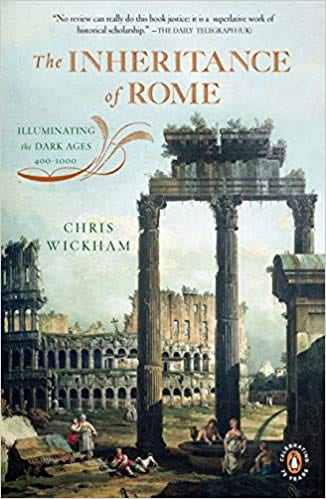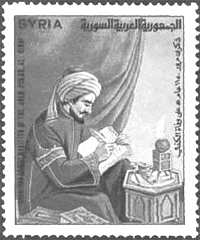Our editorial team shares what they’ve been reading as the new academic year begins
Pranav
Many historians today read widely and work hard to incorporate the insights of their colleagues in anthropology, sociology, literary studies and other disciplines. Almost every other graduate student in history is an expert on Foucault (though we must remember that, at least according to Eric Hobsbawm’s autobiography, many American students who claim to engage with Foucault’s work don’t really understand it that well). However, for scholars whose lives revolve around the idea that the past matters, historians are surprisingly averse to reading about time periods preceding the ones they specialize in. Historians of modern Europe rarely ever engage with the vast literature on pre-1789 Europe. Similarly, most scholars of early modern Europe write as if the world began in 1500 and nothing notable happened before that.
There are, of course, notable exceptions to this lack of perspective. Plus, some, if not all, historians are required to expand their temporal horizons due to the very nature of their research. Most historians of the Reformation are at least expected to understand the basics of late medieval politics and theology. Similarly, anyone working on early Tudor England would be making a grave mistake if they missed the insights of late medieval historians such as Christine Carpenter. Yet, every few years, early modernists engage in a self-contained debate that makes the blood of any self-respecting medievalist boil. Hence, again and again, we get a “revolt of the medievalists.” Some early modernist makes a blanket statement about the “medieval economy” and is then met with a barrage of detailed arguments about the sophistication of medieval economy, religion and society. Somewhat perplexingly, these debates continue to simply repeat each other and have not necessarily transformed the broader historiographical landscape.
Though I’ve had an inkling of the problem for some time now, I’ve become more acutely aware of it only this summer. Right before I left New Haven, I met with one of my advisers who told me that he was really looking forward to sitting down and devouring both volumes of the newly released Oxford History of Life-Writing. He said that he was especially looking forward to reading “The Middle Ages” volume because, while he had read plenty on the subject in early modern contexts, he couldn’t fully appreciate the early modern developments without a proper grasp of what came before. This eventually led us to a rather gloomy chat about how many early modern historians, including ourselves, are often eager to assert the novelty of developments in their period without proper reference to preceding eras. The more histrionic side of the historian within me, with some pardonable exaggeration, concluded that we had failed our medieval colleagues and the shared task of historical understanding was inevitably doomed.

But it doesn’t have to be this way. Of course, it is unfair to expect everyone to read everything. Given the large amount of historiography on nearly every subject, it is a miracle that we somehow manage to develop a decent understanding of even one subject in a specific time-frame. However, we certainly can and must avoid acting like the time periods we work on are hermetically sealed. Reading and writing in this way, we run the risk of destroying the very basis of our shared historical enterprise. Therefore, at the beginning of the new academic year and in the spirit of more robust historical collaboration, I invite you to read Chris Wickham’s majestic The Inheritance of Rome.
Though primarily a specialist in medieval Italian history, Wickham ranges across multiple empires, geographies, time periods, and systems of religious belief. The book takes the reader from the western fringes of Carolingian Europe to the heart of the Byzantine empire with ease. At the core of the book is a case for seeing early medieval Europe in constant dialogue with the erstwhile Roman Empire (which, of course, only collapsed in the west and had a long afterlife in the east for over 900 years). Given the lack of early medieval evidence on so many subjects that fascinate early modern and modern historians, some of the chapters make for slightly dull reading. I could only take so much interest in the dynastic politics of the Carolingian Empire. But most other chapters are a delight to read. The synthesis of a vast body of historiographical literature is succinct and Wickham blends different arguments with skill. The book is an ideal starting point for early modern and modern European historians who wish to stop gloating at their own achievements and take a long-term perspective for once.
As a historian of early modern politics and religion, I learned a great deal from two particular parts of the book. First, Wickham has a long section on the much-studied debates on iconoclasm in the eighth and ninth-century Byzantine empire. He relies on the seminal work of Peter Brown who connected the detailed theological debates to broader currents within Byzantine society. For an early modernist, the parallels with Protestsant iconoclasm are hard to ignore. I was certainly encouraged to think more deeply about the theological justifications in each case and how they mirror or differ from each other. Second, Wickham begins the book by talking about how deeply misunderstood the early middle ages are. Some scholars and non-scholars alike tend to look for the emergence of national communities in the period. One of Wickham’s central aims in the book is to reveal the absurdity of this quest. As an early modernist who too often runs into questions about incipient nationalism, it was intriguing to see that some of the efforts to chart nationalist genealogies go back as far as the early middle ages. A real expansion of perspective, one might say.
I have perhaps been too harsh on myself and my fellow early modernists. The field of early modern European history has come a long way and one can only hope that it will continue to evolve over time. But it is necessary for both early modern and modern European historians to begin thinking of ways that allow us to take advantage of the detailed and careful research that our medieval colleagues publish so frequently. All of us only stand to gain from greater sharing and increased collaboration.
Andrew
If your upcoming studies this autumn will take you into the intellectual history of Islam, one indespinsable text I would recommend is Majid Fakhry’s, A History of Islamic Philosophy. Fakhry’s classic makes particularly rich reading for understanding the origins of Islamic philosophy and elucidating the way those origins interacted with Greek Philosophy, Islamic Theology and political developments in the Islamic Golden Age. In particular, it shows the distinct way in which philosophy acted as hermeneutic tool to interpret the Koran and provide a necessary companion to aid in one’s knowledge about the natural world.

One particularly rich example is that of Al-Kindi (801–873). Known as the “father of Arab philosophy,” Al-Kindi had an arguably progressive outlook in that he argued that philosophical claims were relative to both language and culture. But it was because of this relativity, he argued, that they could be adapted so well for the hermeneutic purposes he was advocating. This is one of the many details that Fakhry draws out from the Islamic Golden Age. He then traces these developments all the way through the twentieth century to provide a history of philosophy that is both authoritative and insightful. As such, for both the student of Islamic intellectual history as well as for those looking for a broader understanding of the intellectual development of the near East after the collapse of the Roman Empire, A History of Islamic Philosophy makes for essential reading.
Simon
This past summer Amazon drastically expanded the number of its warehouses, or “fulfillment centers,” that would offer regular tours to anyone curious about the workers (and robots) behind their deliveries. They weren’t the only ones to publicize the working conditions that exemplify what’s new, and what’s old, about a company and distribution system that are poised to become synonymous with capitalism in the early twenty-first century. Book and article exposés on Amazon warehouses have demystified the labor behind delivery. Sam Adler-Bell, writing for Logic magazine, has published a wide-ranging and thoughtful report on Amazon workers and their efforts to subvert, resist or at least side-step the unrelenting imperatives to sort, stock and pick packages at the warehouse. As an analysis that balances critical reflection with the workers’ descriptions in their own words, I recommend the essay to anyone thinking about the nature of contemporary work. The article presents warehouse breakrooms and online forums where workers recount flouting safety regulations, exploiting cheap prices and in some cases collectively bargaining. It describes how workers can use the digital scanners and other technologies designed to maximize efficiency to artificially inflate their “rate” of productivity. That rate, the speed at which they can perform their tasks, determines who gets rewarded, punished or fired, and it displays on the scanners that workers carry everywhere. The rates become, as one quoted employee recalls, “Damocles’s sword,” threatening the worker and always holding her attention.

The warehouse workers’ account of how “the almighty rate rules” recalled for me a different discussion of how attention is directed and shaped in the industrial workplace at another moment when these dynamics appeared to pose a new problem, in Adam Smith’s The Wealth of Nations. I’ve been reading it for research and find Smith’s rich discussion of the psychological conditions imposed by the new “Division of Labor” far more interesting than the reception of Smith as a straight-forwardly laissez-faire theorist would lead one to expect (as Glory Liu, among others, has explained). Smith, writing about the concentration of industrial production he was witnessing in Britain in the 1770s, praised its economic benefits. He recognized, however, that this productivity could only be possible when it disciplined workers in such a way that “the whole attention of their minds is directed towards that single object,” rendering them more efficient “than when it is dissipated among a great variety of things” (Book I, Chapter 1). While Smith imagined workers narrowing their focus to fewer and fewer operations on smaller and smaller pin parts, the story that Adler-Bell tells about their twenty-first counterparts in the Amazon warehouse suggests something different going on. Rather than drill their attention only to the pins, or parcels, the Amazon workers must always be focused on their own rate, itself the product of unflinching automated attention on their movements. Perhaps in this latest iteration of the division of labor, that attention which had been so deeply focused on objects has been again dispersed, now to the workers themselves.



Leave a Reply